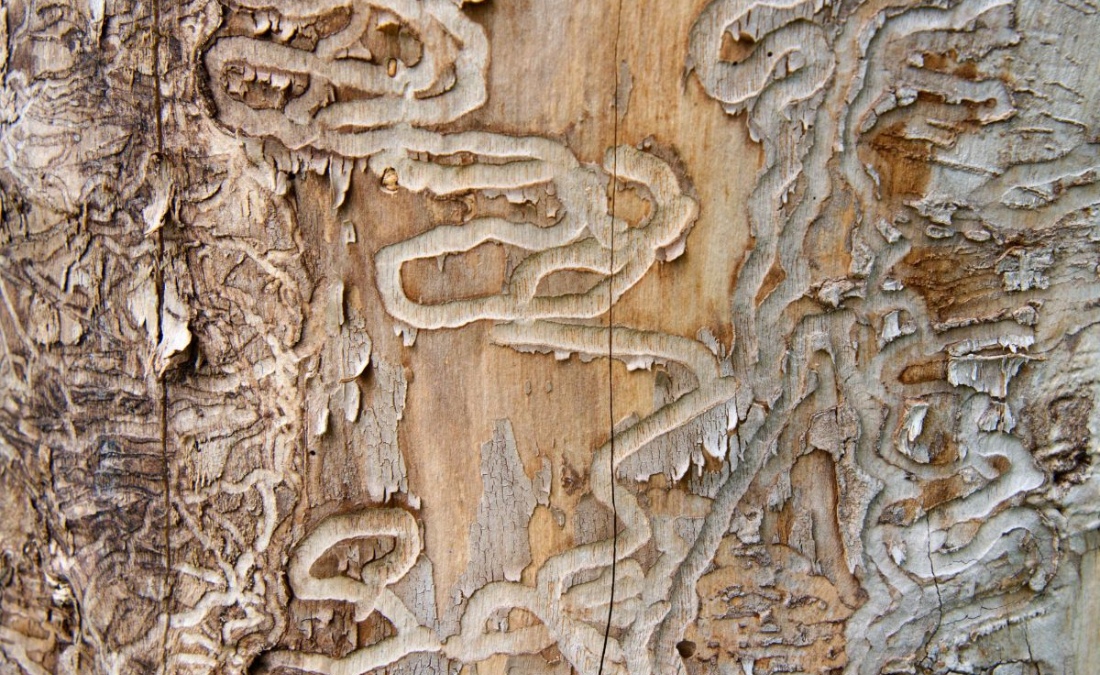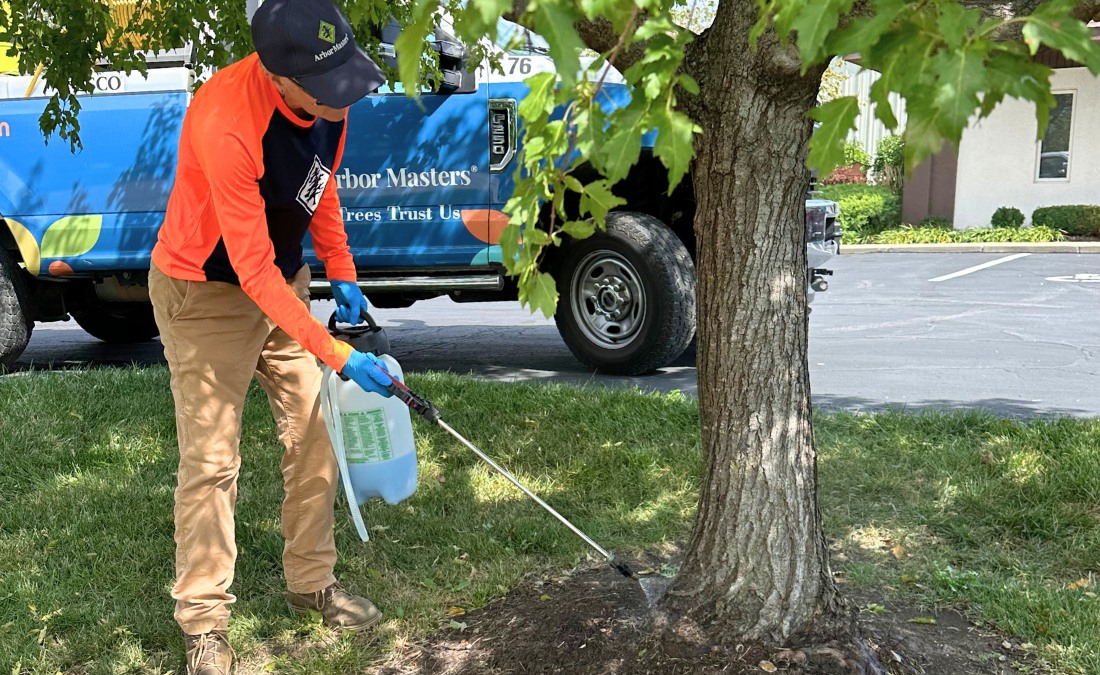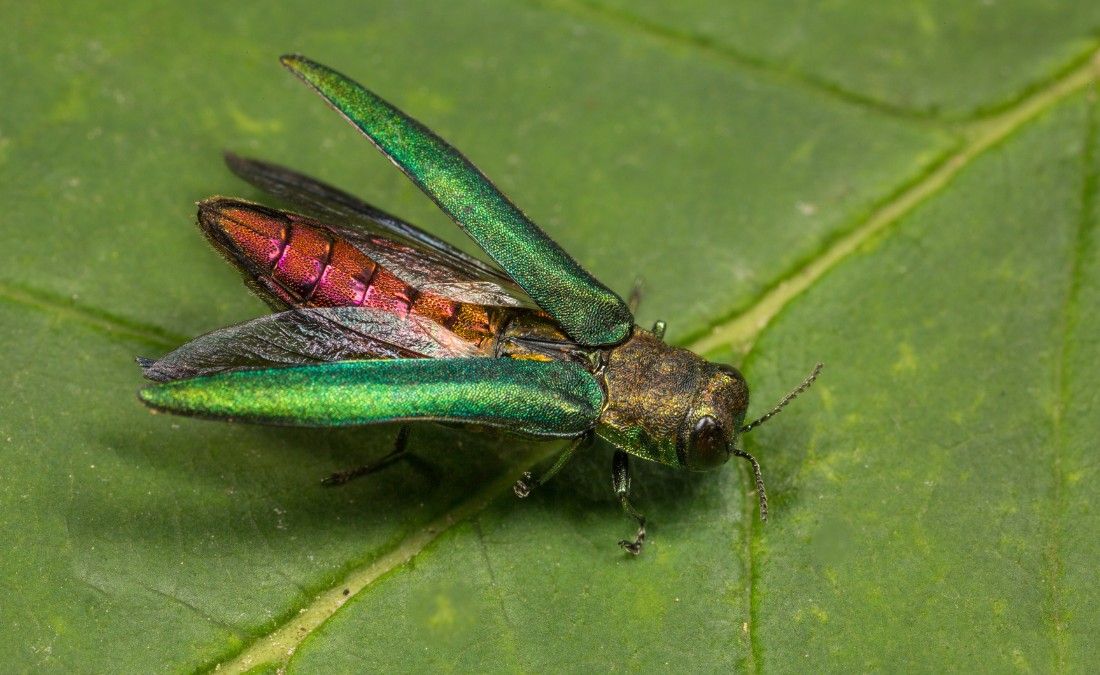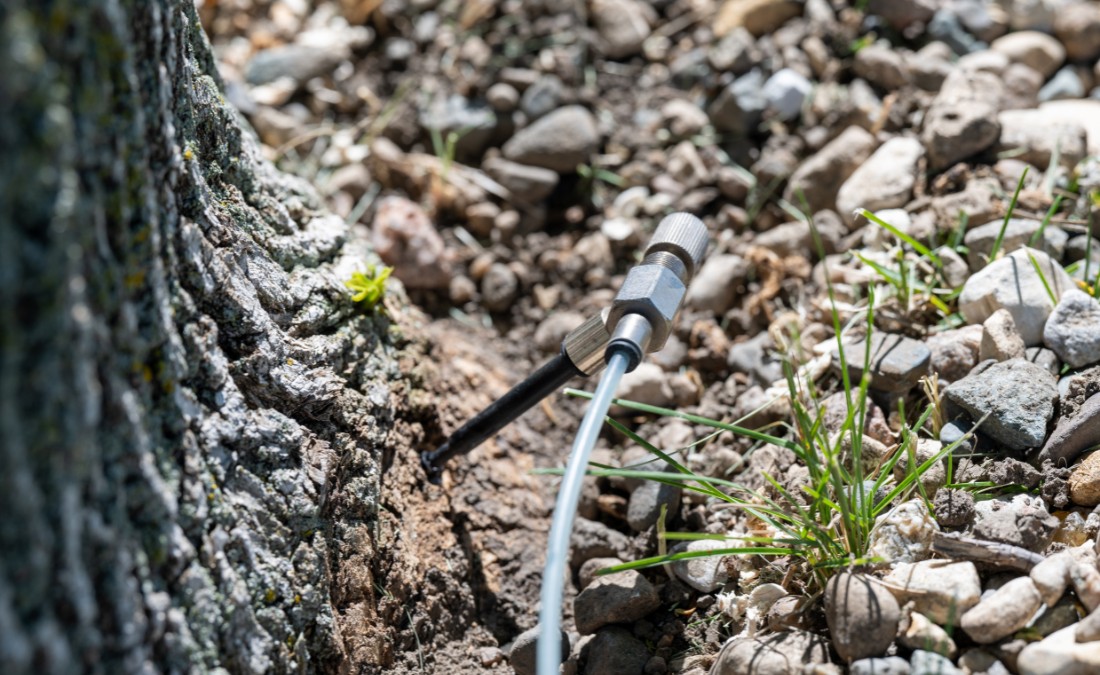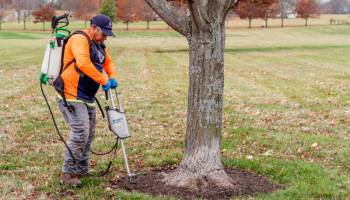Everything You Need to Know About the Emerald Ash Borer in the Midwest
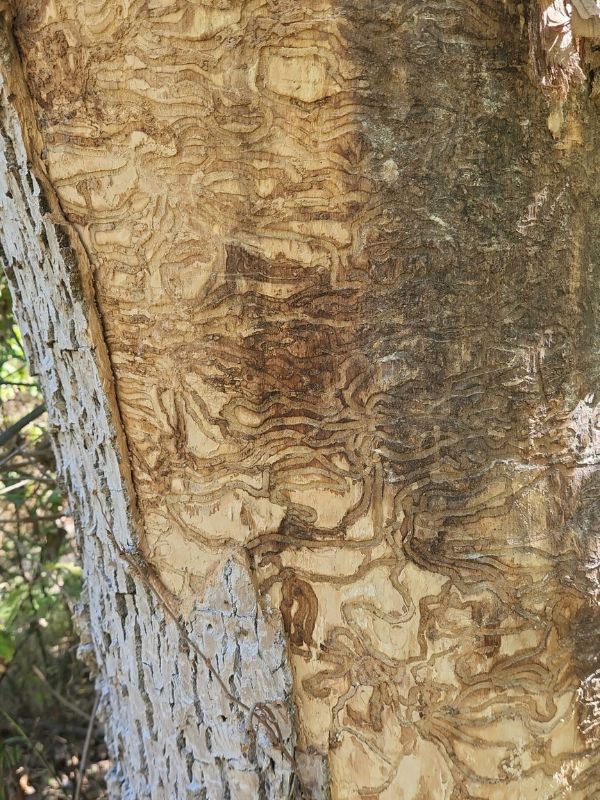
Emerald ash borer is a serious threat to ash trees in the Midwest. Discover how to identify, prevent, and respond to an infestation on your property.
Every year, news stories pop up across the United States announcing that emerald ash borer has reached a new county. This invasive insect has already killed tens of millions of ash trees and continues to spread without slowing down. If you have an ash tree in your yard, it’s not a question of if it’s at risk – it’s when.
Once infested, a tree can die within just a few years. Learning more about the emerald ash borer can help you protect your property before the damage is done.
Key Takeaways:
- The emerald ash borer is an invasive Asian beetle that has spread to more than 30 U.S. states and kills ash trees by destroying their inner wood.
- Signs of an EAB infestation include branch dieback in the upper crown, wilted or discolored leaves, cracking bark, S-shaped tunnels under the bark, and distinctive D-shaped exit holes.
- Early detection is crucial as insecticide treatments can save trees if a professional administers it before extensive damage occurs.
- Dead ash trees pose special dangers due to their extremely brittle wood, requiring careful removal procedures, like extensive rigging or a crane, to prevent injuries or property damage.
- Alternatives to planting vulnerable ash trees include eastern redbud, flowering dogwood, serviceberry, sugar maple, river birch, and American hornbeam.
Frequently Asked Questions About the Emerald Ash Borer
Whether you want to learn more about the ways emerald ash borers attack your trees or what you can do to protect them, we’ve answered all the common questions about this dangerous insect.
What is the emerald ash borer?
The emerald ash borer (EAB) is a small, metallic green beetle native to Asia. The first detection in the United States was in 2002 near Detroit, Michigan, but experts believe it arrived years earlier in untreated wood packaging materials used for international shipping. Because it has no natural predators in North America, EAB quickly spread – infesting ash trees in more than 30 states, including much of the Midwest and Great Plains.
The wood-boring insect attacks and kills native ash trees, leaving them dead and brittle. Arborists consider EAB one of the most destructive forest pests in North America and a concern for any homeowner with ashes on their property.
PRO TIP: Want to learn more about EAB in your community? Check out these local resources for your state:
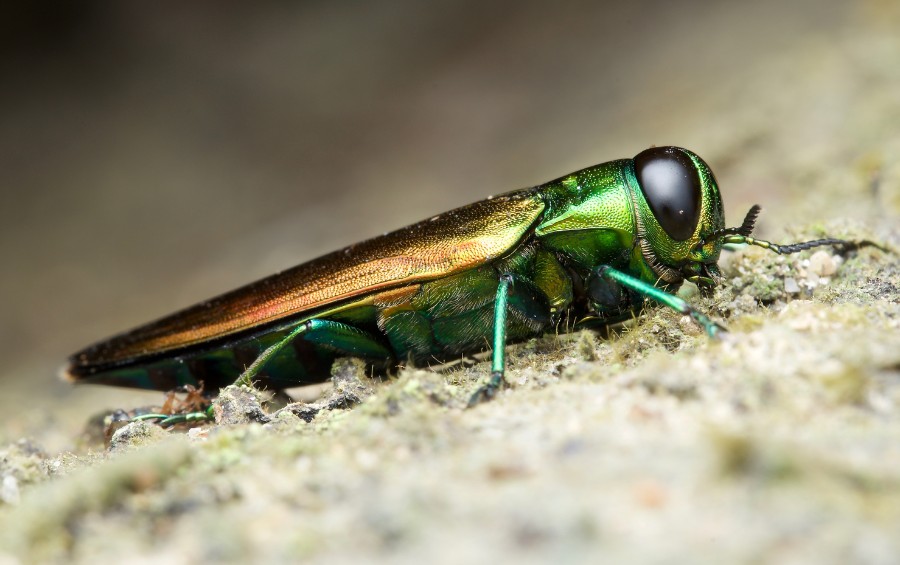
What does an emerald ash borer look like?
The emerald ash borer gets its name from its body’s dark green metallic color. The insect is about 1/2 inch long and has a flat back and a rounded abdomen. The larvae have a brown head and cream-colored body with bell-shaped body segments. They leave behind distinct S-shaped galleries in the tissue they consume, which becomes visible if you remove the bark from the tree.
How does the emerald ash borer spread?
The emerald ash borer spreads by flying from infested trees to healthy ones. It also spreads through the movement of infested firewood, nursery stock, and other ash wood products.
How does EAB damage trees?
Emerald ash borers typically attack ash trees of all ages, stressed or healthy.
EAB adults emerge in the late spring or early summer, depending on weather conditions. The adults do not do any substantial damage to a tree, but they do set events in motion to harm them. Females lay eggs in openings in an ash tree’s bark. After about a week, the eggs hatch, and larvae emerge.
The larvae are the real problem for ashes. They bore into the tree and begin to feed on the inner wood. The loss of the inner wood limits a tree’s ability to transport water and nutrients to and from the canopy.
The larvae will eventually become adults and repeat the process, destroying more of your tree’s inner wood.
A tree cannot recover from inner wood damage, making quick action imperative to save them. Trees will be able to survive when the damage is light, but extensive infestations will require a professional to remove the tree.
EAB typically kills ash trees within two to five years after initial infestation. The time it takes will depend on the general health of the tree, its size, and how heavy the EAB presence is on your property.
How can I tell if my ash tree has an EAB infestation?
There are several signs that may indicate that EAB has infested your ash trees. These include:
- Dieback of branches in the upper crown of the tree
- Wilted, discolored, or prematurely falling leaves
- Splitting or cracking in the bark caused by larval feeding, usually starting in upper branches
- S-shaped gallery tunnels under the bark
- D-shaped holes in the bark where the adult beetles have emerged, usually starting in upper branches
Are dead ash trees especially dangerous?
While there’s risk in working with any tree, regardless of its health, dead ashes are especially worrisome. Removing trees often involves having climbers in the tree. However, EAB-killed ashes have notoriously brittle wood, meaning branches can snap much more quickly than in other trees.
Removing dead ash trees requires more extensive rigging or using a crane to ensure we do the job safely without any injuries to our team or damage to your property.
Can I save a tree after an emerald ash borer infestation?
Whether you can save your tree depends on the infestation’s severity and how quickly you catch it. A tree that has lost too much inner wood will never recover from the damage, meaning tree removal is the only option.
Catching the problem early will give your tree a chance to survive, as arborists can use insecticides to kill the larvae in your tree and stop the damage.
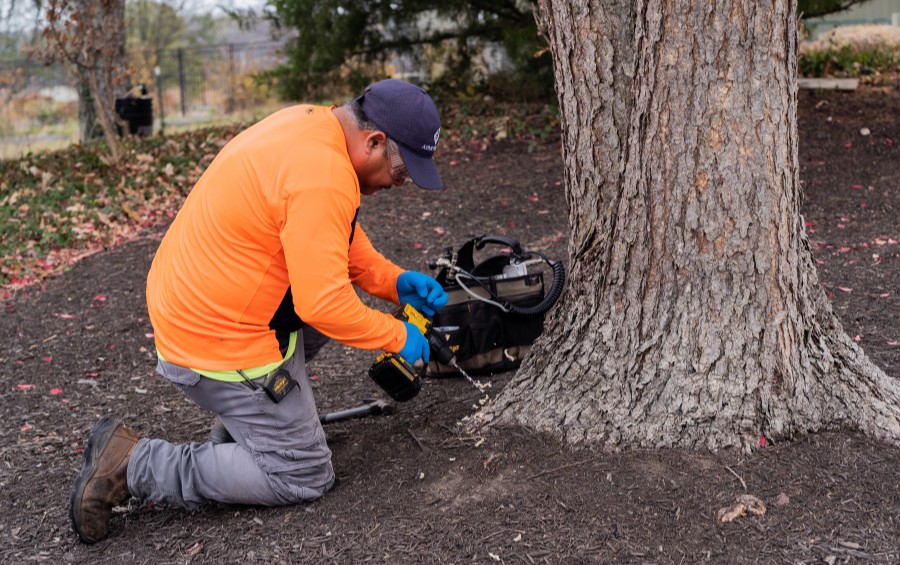
Preventive fungicide treatments can protect ash trees for two years.
Are there preventive treatments for my ash trees available?
Yes, you can have an arborist perform trunk injections of insecticides that will protect your trees for two years. However, we typically only recommend this for mature ashes you can’t afford to lose.
Should I remove my ash trees before they’re infested?
If you don’t plan to treat your ash trees, removing them preemptively can reduce the risk of them becoming hazardous once emerald ash borer arrives. However, it’s a decision worth making with input from a certified arborist. In areas where EAB pressure is still low, your tree may not be at immediate risk – especially if it’s healthy and adds significant value to your landscape. An arborist can assess its condition and help you weigh the cost of treatment versus removal.
Should I avoid planting ash trees?
We recommend avoiding planting ash trees due to the danger they pose to your property when EAB kills them. Instead of growing an ash tree, consider some of these alternatives that thrive in most Midwest and Great Plains neighborhoods. Some alternatives to ash trees include:
- Eastern redbud
- Flowering dogwood
- Serviceberry
- Sugar maple
- River birch
- American hornbeam
How can I tell if I have an ash tree?
Ashes are easy to identify due to their compound leaves. One leaf will have several tiny leaflets on it. Additionally, every branch will have an opposite directly across from it. Cornell University created a simple guide to identify ashes on your property.
Are emerald ash borers the only tree pest to be concerned about?
While EAB is one of the most destructive and notorious pests, they aren’t the only problem to worry about. Other insects can be a nuisance, harm the aesthetics of your tree, or defoliate it. Some other insects to watch for every growing season include:
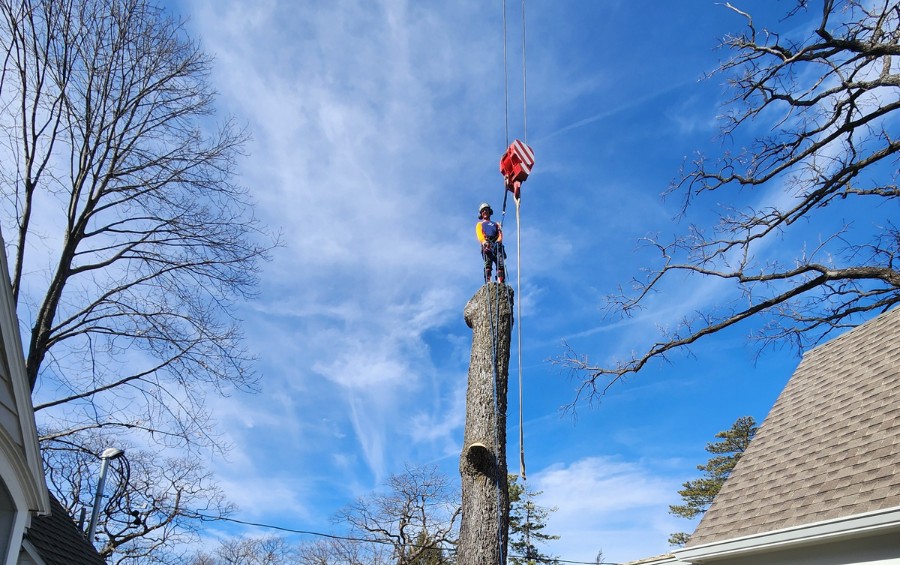
Whether You Need Treatment or Removal, Arbor Masters Has Your Ash Trees Covered
Emerald ash borer started as a concern for homeowners in the Northeast, but now it’s right here in our own backyards. This invasive pest kills ash trees quickly, turning once-healthy trees into serious safety risks for your home and family. If you’re worried about your ashes, the team at Arbor Masters can help.
Our ISA Certified Arborists are trained to identify early signs of EAB, apply targeted preventive treatments, and safely remove trees that can’t be saved. Don’t wait for visible damage – take steps now to protect your property. Call us today at 816-524-3131 or request a quote online.
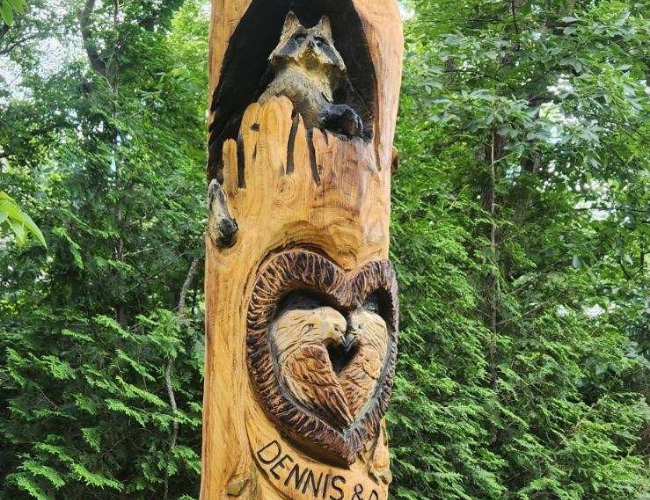
Get the latest local news, tree care tips, special offers, and company updates directly to your inbox! It's easy to subscribe and there's no spam - we promise.
"*" indicates required fields

